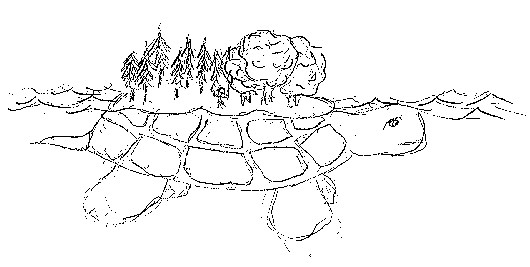Before the Beginning
In his previous post, Kevin asked the question I pose to my students on the first day: “where would you begin?” I follow it with “where would you end?” And, of course, “why?” In upper-division courses, I use those questions to assess what my students already know and to give a basic overview of the main people, events, and concepts.
Beginnings tell us about meanings, about how we envision the story and what it’s about. A monograph’s opening vignette, for instance, should clue us into the main storyline of the book. For instance, Kevin’s Tri-Faith America begins with the tale of four chaplains (2 Protestant, 1 Jewish, and 1 Catholic) who sacrificed their lives together during WWII. What should have been a simple expression of tri-faith America in the mid twentieth century, however, turned into a political conflict in the 1950s and early 1960s. As Kevin wonderfully narrates, memorializing the chaplains became a sticking point where religious division expressed itself in political moments – particularly John F. Kennedy’s race for the White House.
For the first half of the survey, do we begin in western Europe? That form of beginning seems to privilege those who initiated the action and who eventually form the United States (and then tear it apart). Do we begin with nomadic hunters who crossed a land bridge into Alaska? That beginning seems to privilege the people who first occupied the place?
 |
| Lindsey Murtagh |
Major Problems tries another tack. It begins with mythology. The first document is a story of the Iroquois describing the beginning of the world. The tale begins, as so many creation myths do, with the words, “In the beginning.” Before the beginning, there was “no world, no land, no creatures of the kind that are around us now.” The story then narrates how the world was made – how a woman of the Sky-World was too adventurous for her own good. After digging in the earth around the Great Tree, she fell through a hole only to be saved by a great sea turtle. The woman took the remains of earthy heaven she had held before she fell and with them made the land. She had two sons, one who represented the right and one who represented the wrong. They made animals and food – some good, some bad. The sons fought forever, with neither able to “vanquish the other.”
I like this beginning because it places the beginning of US history in the humanities of stories. Each lecture, each reading, each event – these are stories of a past long ago but still with us: the search for adventure or a better life like that of the Sky-Woman; the life-giving power of nature and its precarious state of being; our human role in making and transforming the land for good and ill; and the continual and confused struggle between good and bad.
The documents following then move through the rise of the west African slave trade, first contacts in South and North America, and two drawings (one of a smallpox outbreak and one of Native American land use). Those two images will be the focus of our first discussion next week.



Ed: I am starting with the cosmology of the native people that will later contribute to the clash with Europeans and an opportunity to compare it to Puritan thought.
Lilian, cosmology is such a great way to start. I often use the T-O maps from Europe before Columbus as a way to show that Europeans were “oriented” toward the Middle East because Jerusalem was seen as the center of the world (the kicker there being where we get the word “orient” in that capacity). This explains, in part, Columbus’s voyages. There’s that great Pauline Watts essay on his hopes to restore Jerusalem through his adventures. Cosmology even links the Catholic crusades for the holy land to the period!